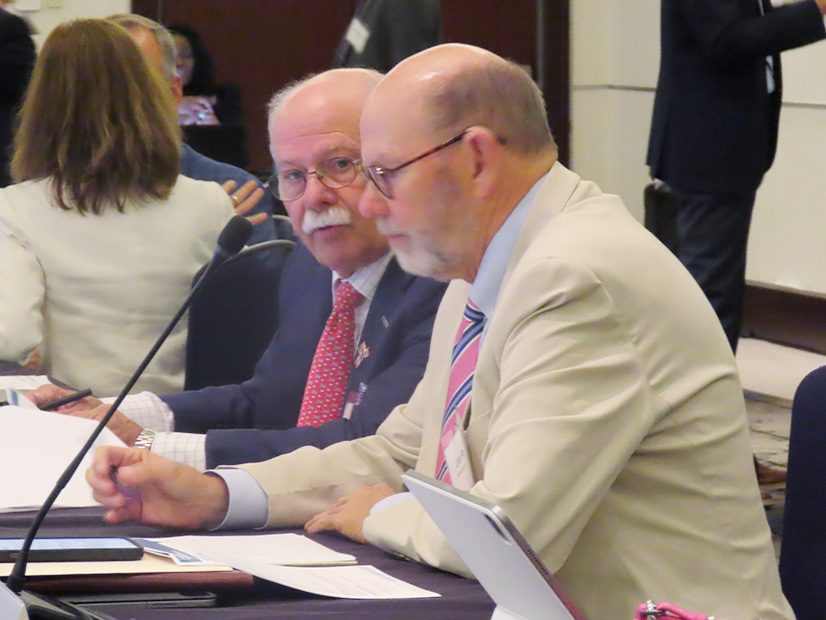Battery storage facilities and data centers added to existing generator locations have a lot in common, with both supply and demand on a single interconnection. Yet despite the similarities, PJM is refusing FERC Order 2023 requirements regarding flexibility on charging battery storage while offering data center co-location projects those same provisions.
PJM treats storage interconnection requests as an unavoidable driver of peak demand, while Order 2023 provides the option to assume the opposite. The PJM framing of interconnection causes batteries to appear to exacerbate transmission problems from plant retirement and require additional transmission upgrades, rather than meeting the system need caused by retirement.
(PJM’s claims of unsolved problems with providing storage developers the ability to define operational limits are on Page 27 of Answer to Protests filed in July 2024.)
This is in direct opposition to the Order 2023 directive (starting at paragraph 1,448) that allows energy storage projects to define their interconnection operational limits on charging.
PJM claims that storage asset owner commitments, real-time monitoring equipment and system protection controls are all insufficient and incapable of limiting battery charging operations throughout its interconnection rulemaking comments and initial Order 2023 compliance filing.
Simultaneously, PJM developed guidelines and interconnection agreements for data centers co-located with generation, allowing those asset owner commitments, real-time monitoring equipment and system protection controls to limit data centers from creating transmission system demand.
In March, PJM published guidelines for co-located load with a new or existing generation facility. PJM includes data center loads as an example of a more sophisticated and flexible treatment of both a supply and a demand at a single point of interconnection. PJM now provides an interconnection agreement for such co-located facilities after study of their proposal.
Meanwhile, PJM simultaneously argues it cannot modify interconnection manuals’ treatment of energy storage facilities as inflexible loads. This accommodation of co-located load illustrates PJM’s ability to establish sensible requirements through interconnection agreements that could allow both data centers and energy storage assets to contribute to the economy without undue obstacles.
Neither the co-location guidelines nor the interconnection manuals have been filed at FERC, but the efforts by PJM to continue discriminating against storage interconnection were expressly rejected by FERC in Order 2023.
PJM’s effort seeking reconsideration of this practice also was rejected by FERC. A third attempt by PJM to avoid compliance with the provision that storage be able to request to be limited from charging on peak, which is recognized elsewhere in the U.S., is included in FERC’s current refusal to accept PJM’s compliance filing for Order 2023.
FERC has given PJM until late October to once again explain why its noncompliant load deliverability tests for storage interconnection requests, which also disqualify storage from surplus interconnection and CIR transfer opportunities, should be permitted.
PJM’s refusal to comply with Order 2023 is a disservice to the millions of people who rely on the interconnection process to address supply needs and provide just and reasonable rates.
FERC’s directive more accurately reflects a wholesale market where storage assets can arbitrage between charging in low-price, off-peak hours and selling only in peak periods. PJM’s disparate treatment of energy storage load is not based on science or engineering.
Just as they negotiated provisions for data centers, they must do the same for storage. The RTO’s next Order 2023 compliance filing is the time to make this change.
Mike Jacobs, of the Union of Concerned Scientists, advocates at PJM, FERC and state commissions for the reliable expansion of the grid for renewable resources.

